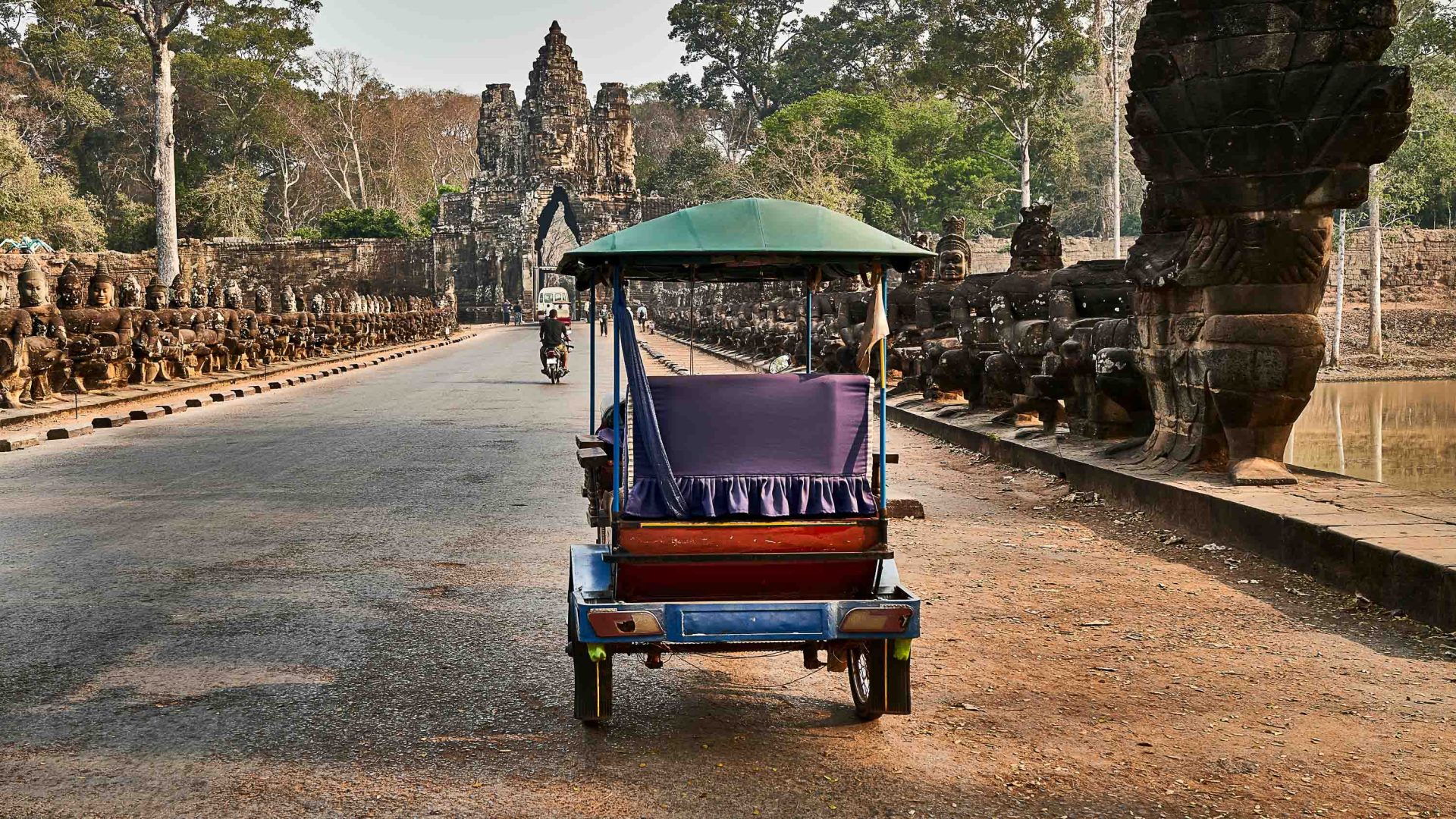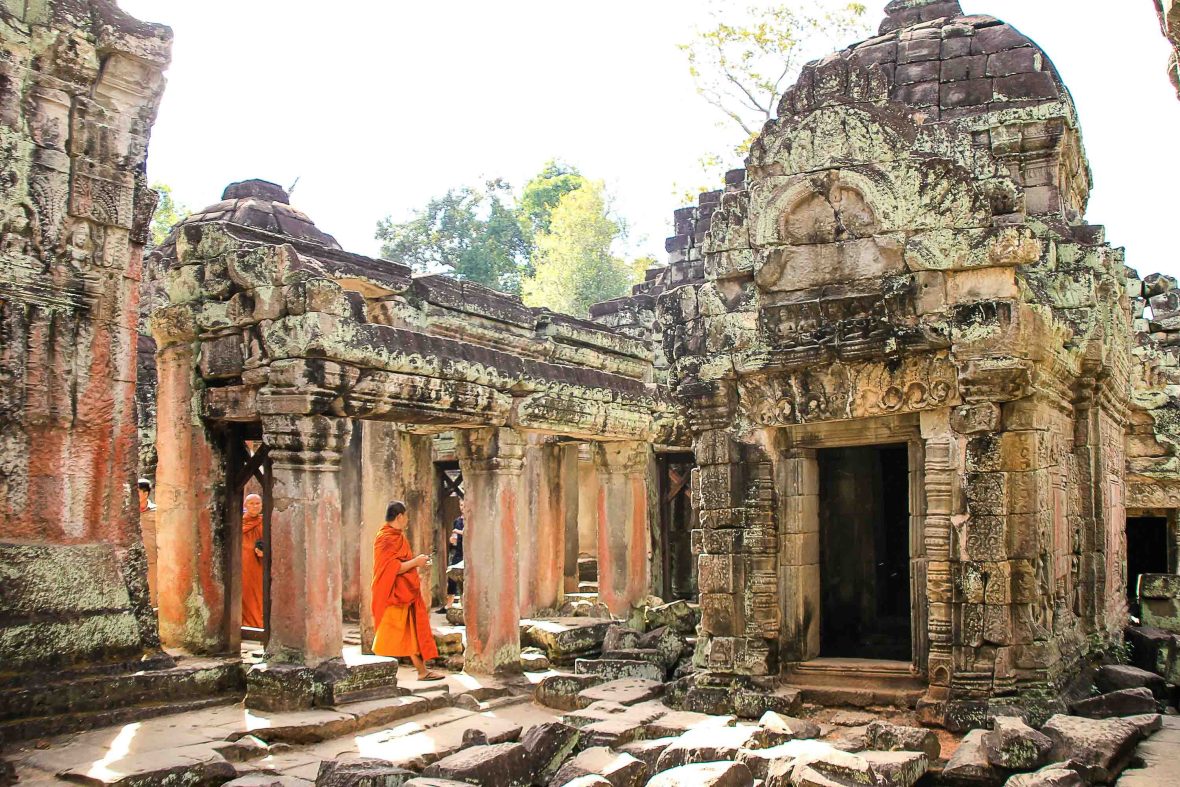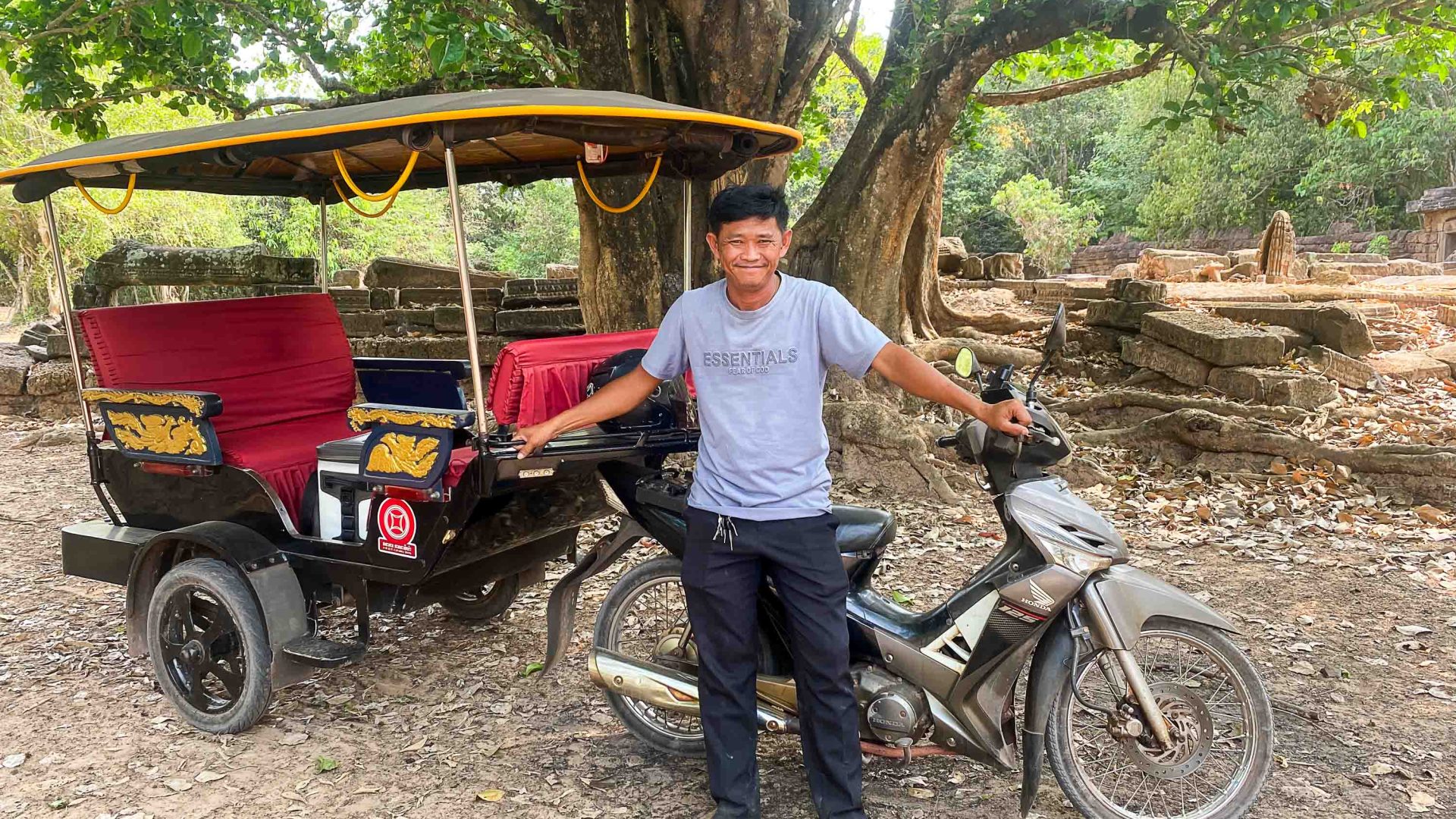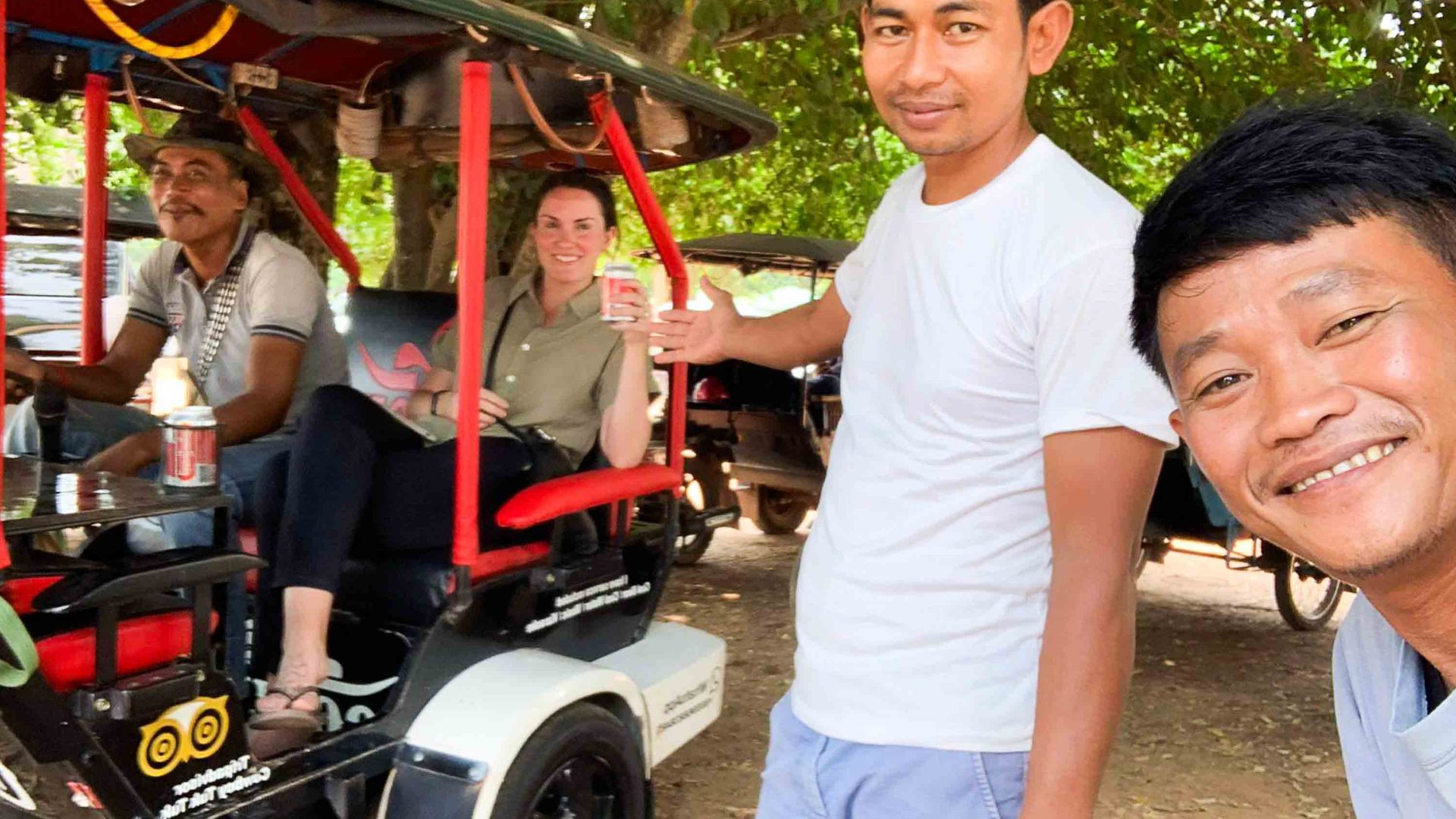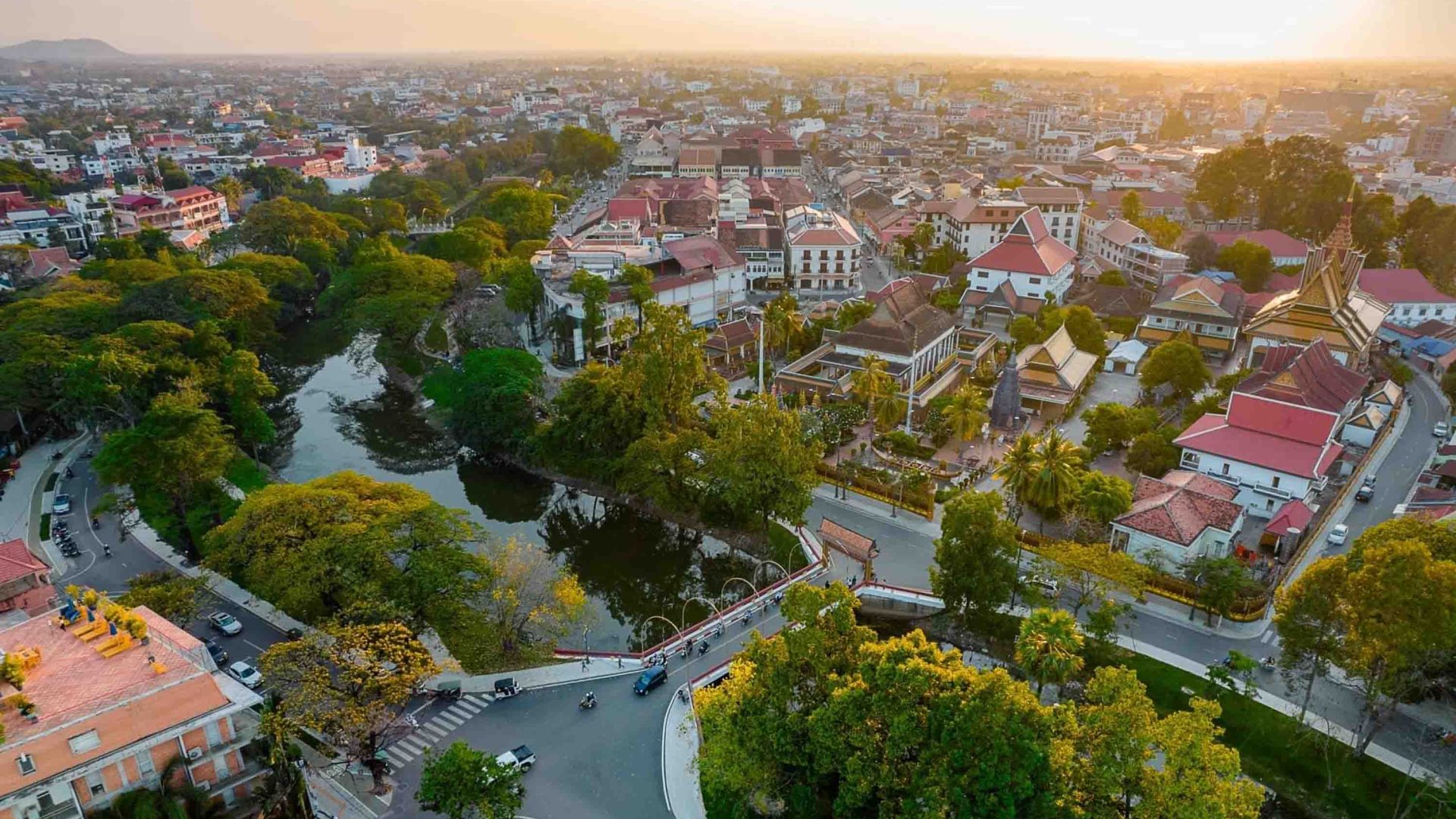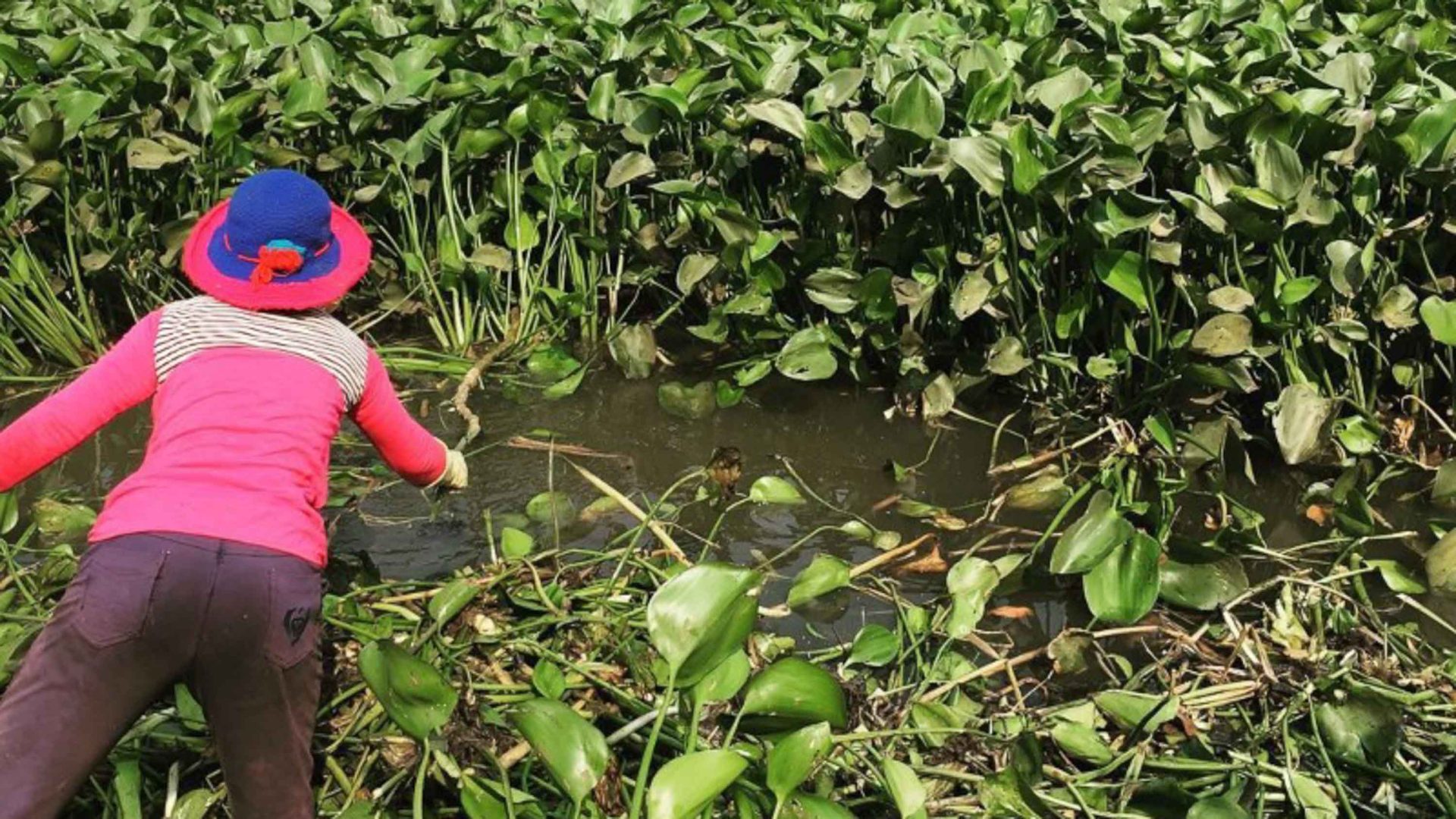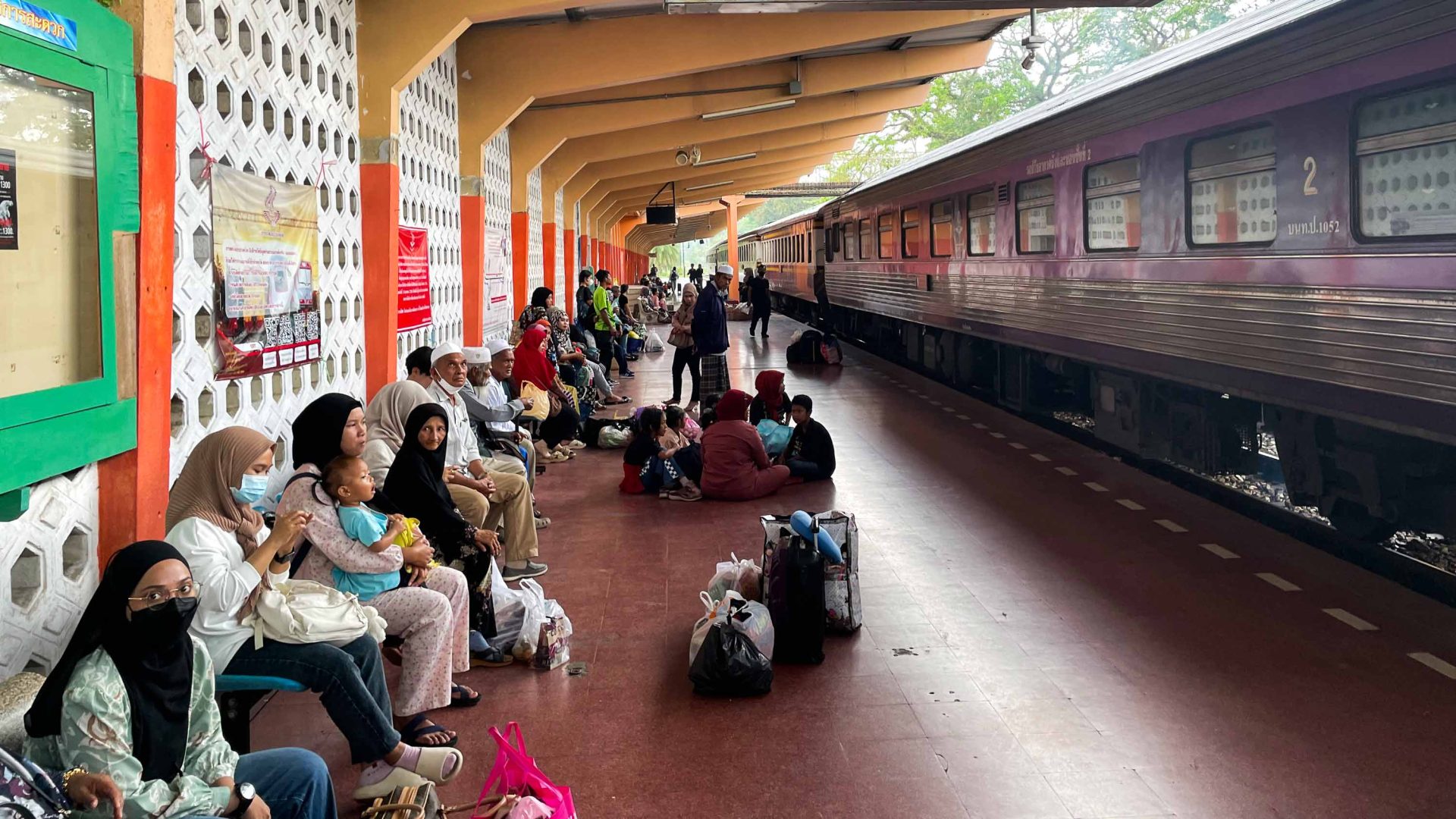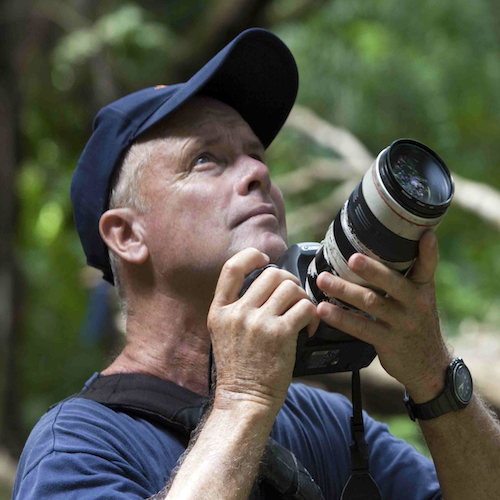“I come here …” he looks off in the distance, counting, “around one million times.”
I’m climbing up the worn sandstone steps of Angkor Wat with Sour (pronounced soo-uh) Lay, a petite man with a mischievous smile. For the last 20 years, Sour has been a tuk-tuk driver in the Cambodian city of Siem Reap—a respectable and fruitful career. Until recently.
At 9am, the sun is baking rather than broiling, and my shirt is already clinging to my back. We walk through an archway that welcomes us into the 12th-century temple, its walls lined with carvings apsara dancers immortalized in the middle of hip shimmies. Barefoot monks clad in orange robes walk ahead of us. Through a dark passageway, we emerge onto a back courtyard, where Sour points me to another archway that looks out on a grid of covered hallways dotted with wispy palms, the ever-encroaching jungle in the distance. “Sister, I take your picture here, like this.” He shows me how to pose, leaning against the wall.
Sour, like many other people who make a living driving people around in a “remorque,” or two-wheeled covered cart hitched to the back of a motorbike, isn’t just a chauffeur, but a guide, a friend—and an expert iPhone photographer. One million times around the temple complex will do that to a person.
When I was last here in 2019, business was booming for Sour and his colleagues—Cambodia welcomed the highest number of visitors ever recorded that year. But now, the same tuk-tuk drivers who were thriving during the city’s tourism heyday when I left are in desperate pursuit of work.
